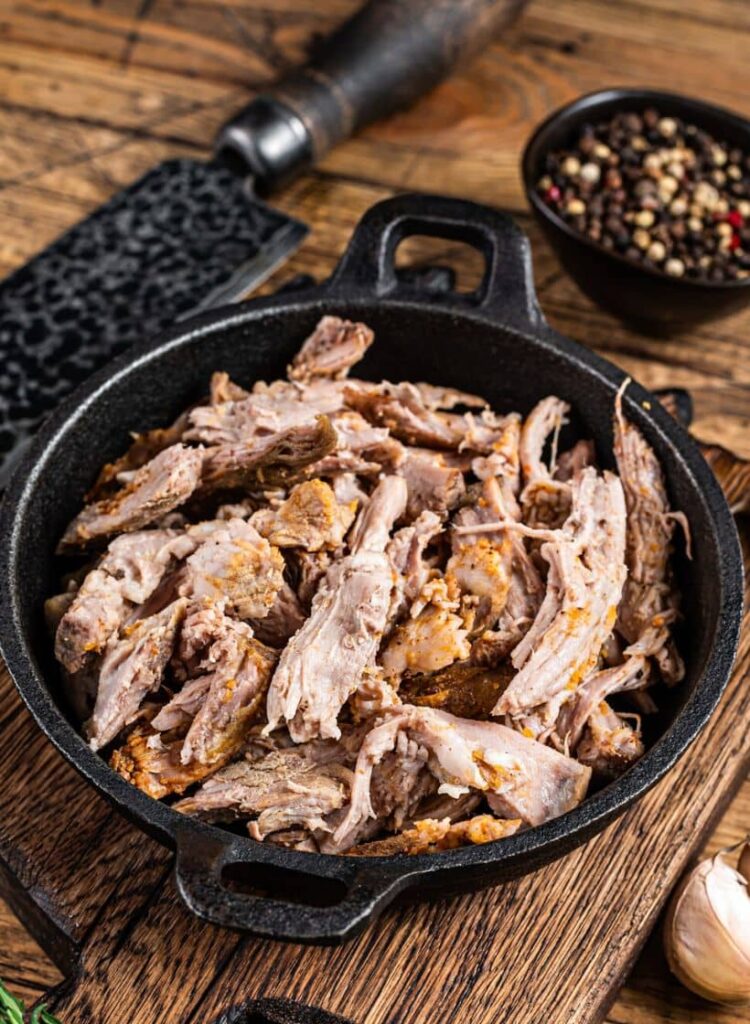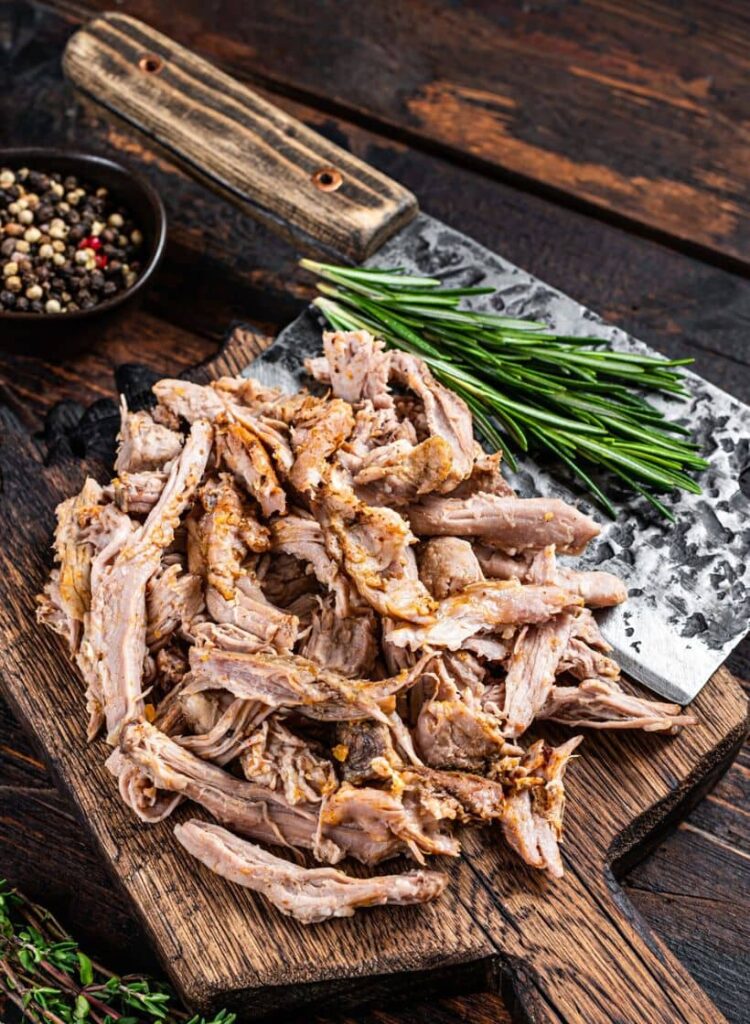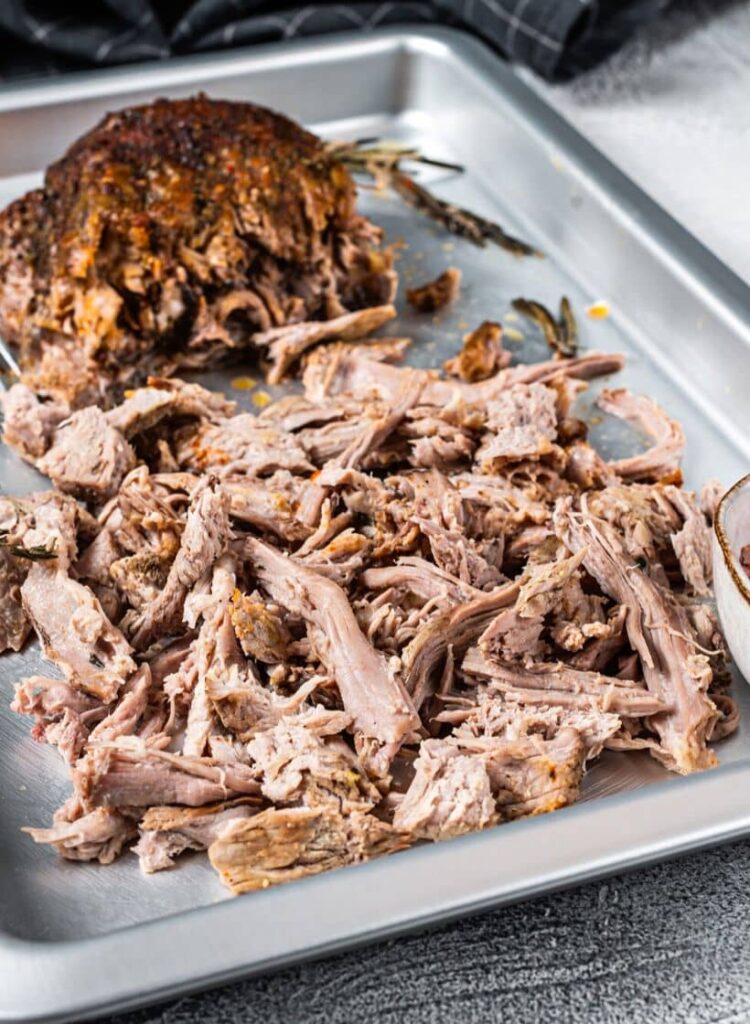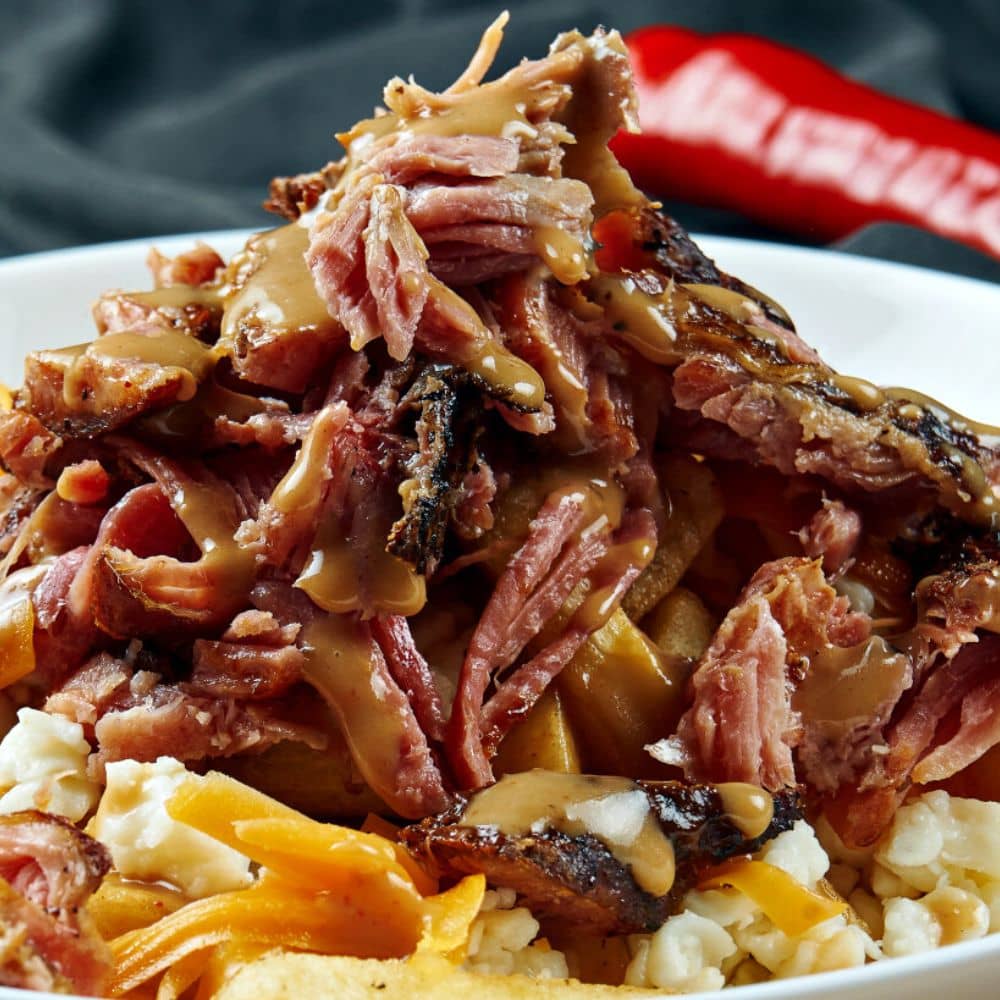Have you heard of pork butt (also called Boston butt)? Despite the name, this cut of meat is actually from the fatty part of a pig’s shoulder (not to be confused with pork shoulder, which is a cut that actually comes from lower on the foreleg).

When cooking your pork butt to make a delicious pulled pork dinner, do you know the best pork butt temp? Using the right temp for pork butt is important because it ensures the meat gets cooked fully but also stays tender and juicy.
You want to pay attention to the pork butt internal temp (also known as Boston butt internal temp) to verify that the meat has been cooked properly. But do you know what temp to smoke pork butt at?
Read on to get all the information you need to cook the best-pulled pork butt for your next family gathering or summer barbecue!
The Perfect Pork Butt Internal Temperature
What temp is pork butt done at? While there are different options for cooking temperatures (we will get more into that later), the proper internal temperature to pull your pork butt at is 200 degrees F. Though various pitmasters will swear by temperatures ranging from 195 degrees to 203 degrees, you can’t go wrong with a solid 200 pulled pork temp.
This ensures the meat is thoroughly cooked and is the proper texture to be shredded. (If it is too fatty or greasy, it will not shred right.)
Should You Cook to Time or Cook to Temp?
While you can pick a time frame you want to cook your pork butt in and adjust the temperature you cook at accordingly, when it comes to smoking a pork butt, what temp to cook pork butt at is best determined by your desired outcome.
Smoked pork butt temp typically ranges from 225 degrees F to 250 degrees F, with the ideal pork butt temperature being 225. At this temperature, the pork butt should take about 1.5 to 2 hours per pound to cook, and many smokers leave it cooking overnight.
Plus, 225 gives the meat time to absorb the smoke and not dry out. Smoking at 250 degrees will still keep the meat juicy but save some time, as it takes closer to 1 hour per pound. However, this temperature may result in a less smokey flavor.
If you are short on time, you can smoke your pork butt at 275 or 300 degrees in extreme cases, but the meat will be much less tender. This may still work for pulled pork smothered in sauce, but we recommend 225 degrees F to keep the meat juicy.

Watch For the Stall
Have you heard of the stall? This is when the pork butt reaches a certain internal temperature and seems to stop cooking, sometimes for hours on end. The pork butt stall temp is about 160 degrees F.
The reason for the stall is that when the meat starts losing moisture (which happens when it hits 160), it starts to cool off, much like how people cool off when they sweat.
However, there are ways to combat this issue, like wrapping your pork butt!
To Wrap, Or Not to Wrap?
Wrapping your pork butt in foil is one of the best ways to speed up cook time, avoid “the stall,” and keep the meat tender and juicy because it holds in the moisture.
If you are going to wrap your pork butt, it is best to do so when the meat is halfway cooked. This holds in the heat and can shave an hour off the cooking time, and it also can protect the pork butt from getting too smokey and bitter.
So, what temp to wrap pork butt? Experts recommend 165 degrees, meaning you’ll wrap the meat right before it starts losing a bunch of moisture. Talk about perfect timing!
Pork Butt At 225°f – How Long Will It Take?
If you cook your pork butt at 225 degrees F, it will take anywhere from 1.5 to 2 hours per pound.
So, if you have a 10-pound pork butt, that will be 15 to 20 hours. If you want to smoke your pork butt overnight, 225 is the ideal temperature.
225 is the perfect temperature because it keeps the meat smokey, juicy, and tender. If you choose to wrap your pork butt, it will speed up the cooking time a little bit, so keep that in mind.
Prepare Your Pork Butt for Best Results
The day before you plan to cook your pork butt, season it with a BBQ rub or the seasonings of your choice and refrigerate it overnight to really absorb the flavor. (You can season it directly before cooking if needed, but the flavors will not be as settled into the meat.)
One of the most overlooked tips is to make sure your pork butt is at room temperature before you begin cooking it, which will help it cook faster, so take your pork butt out of the fridge and let it rest while the smoker is heating up.
When it comes time to cook your pork, position its fat-side up so that the fat will flavor the meat while it cooks. As mentioned above, we recommend wrapping your meat halfway through cooking when the internal temperature reaches 165.
How To Avoid Dry Pork?
The best way to avoid dry pork is to wrap it in foil halfway through cooking to hold in the juices and keep the meat from stalling in the cooking process.
Also keep the internal temperature in mind, as the ideal internal temp is 200 degrees F.
If your pulled pork’s internal temperature is 205 or higher, you run the risk of it beginning to dry out. Similarly, if the internal temp is too low (under 195), the meat might not be “dry,” but it might be too tough.
Check also:
- What Temp to Smoke a Brisket
- How To Reheat Rotisserie Chicken
- How to Cook Frozen Shrimp?
- Ways to Reheat Crab Legs?
Frequently Asked Questions

What Temperature Is a Pork Butt Done At?
According to the USDA, the proper pork butt cooked temp is technically 145 degrees F internally to make it safe to consume.
But that is not the case when it comes to the proper cooking procedures to make pulled pork delicious and juicy.
So, what temp to pull pork butt at? In order to break down the fat and collagen so the meat is easy to shred and juicy, you will want to cook your pork butt until the internal temperature reaches 200 degrees F.
Is Pulled Pork Done at 180?
Pulled pork is technically safe to consume at 145 internal degrees, so 180 degrees would be considered “done.” However, the best-pulled pork smoking temp is 200 degrees F because the meat will be tender, juicy, and in the correct state to easily shred.
How Long Does It Take to Smoke a Pork Shoulder At 225?
The best pork shoulder temperature to cook at is 225 because it keeps the meat juicy, and tender, and makes it perfect for shredding. That said, the time it takes to cook your pork at 225 degrees will depend on how much meat you have.
The general guideline is 1.5 to 2 hours per pound at 225, so a 10-pound pork shoulder will take about 15 to 20 hours. However, if you wrap it in foil, the cooking time will quicken. 225 is the ideal temperature if you want to smoke your pork overnight.
What Temperature Should a Pork Shoulder Be Cooked To?
To be considered safe to consume, pork only needs to be cooked to 145 degrees F according to the USDA. But for pulled pork, the pork shoulder internal temp should reach 200 degrees F (the acceptable range is 195 to 203 usually).
200 degrees makes the meat juicy and easy to shred, and it will be delicious with your favorite barbecue sauce in a classic pulled pork sandwich!
Ready to make your own pulled pork butt feast? Check out this straightforward recipe below to get you started!

Smoked Pulled Pork
Ingredients
- 1 8-lb pork butt
- 2 tbsp mustard
- 1/3 cup BBQ rub
- Wood chips of choice (apple, maple, or bourbon barrel recommended)
Instructions
- Cut a few slits into the fat side of the pork. Cover the fat in mustard and massage the BBQ rub into the meat. Refrigerate overnight in plastic wrap so the meat absorbs the flavors.
- When you are ready to begin cooking, preheat the smoker to 225 degrees F.
- Place the pork fat side up and smoke for about 12 to 16 hours, until the internal temperature reaches 200 degrees F.
- Remove from the smoker, wrap in foil, and let the meat rest for at least an hour before shredding it.
- After the meat is shredded, serve it up with your favorite barbecue sauces and pulled pork toppings. Enjoy!





